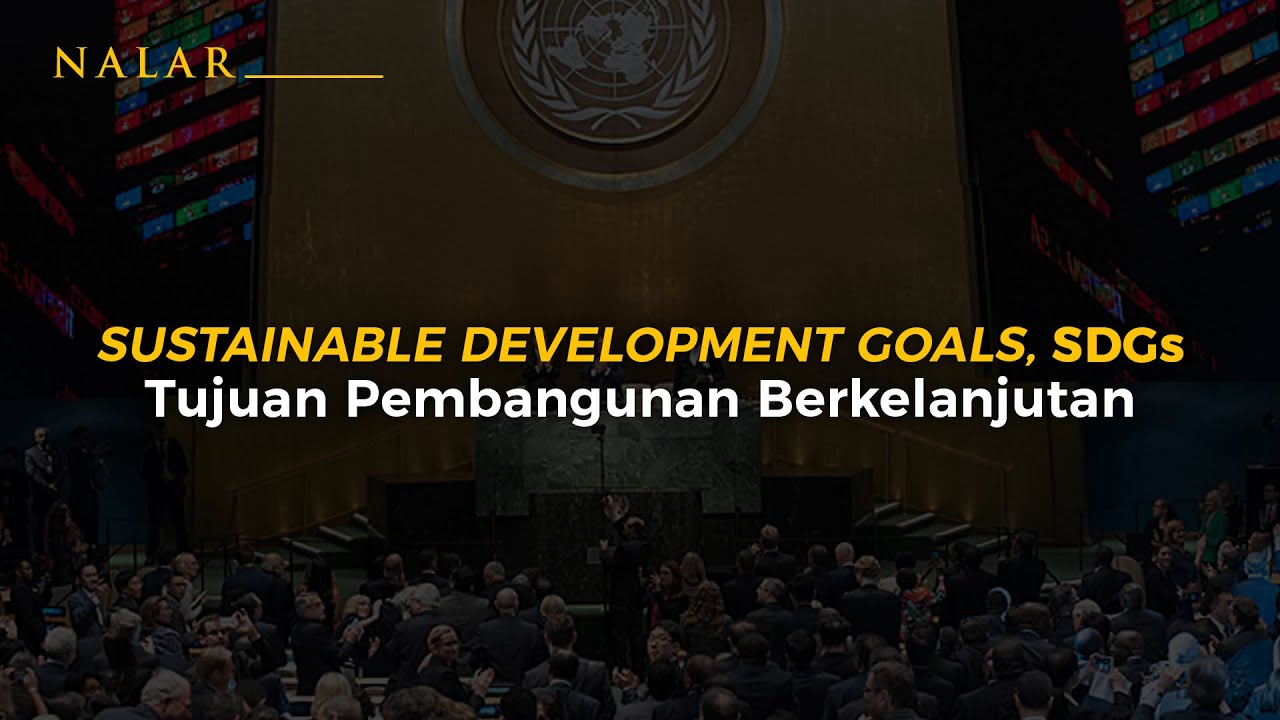Proving Arguments using Rules of Inference (SDGs)
Summary
TLDRIn this engaging discussion, the speaker explores the application of rules of inference to validate arguments related to the Sustainable Development Goals (SDGs). Focusing on SDG 3 (Good Health and Well-being), SDG 4 (Quality Education), and SDG 13 (Climate Action), the examples illustrate how logical reasoning can demonstrate the interconnections between universal health coverage, educational engagement, and environmental sustainability. By employing hypotheses and inference techniques, the speaker effectively underscores the importance of these goals in fostering a healthier, more equitable world.
Takeaways
- 😀 The discussion focuses on applying rules of inference to prove valid arguments.
- 💡 Example 1 demonstrates how achieving universal health coverage (H) leads to reduced preventable deaths (D) and equitable health care access (E).
- 🔍 Hypothesis 1 states that H implies D, while Hypothesis 2 states that D implies E.
- ✔️ By proving H, we can conclude that equitable health care access (E) is achieved.
- 📚 Example 2 illustrates the relationship between student engagement in interactive learning (A) and improved critical thinking skills (C).
- 🖥️ Hypothesis 2 connects the effective use of digital tools (D) to better collaboration among students (B).
- ❌ The negation of A or D indicates that students are not collaborating effectively.
- 📉 In this example, the conclusion drawn is that students are not engaged in interactive learning activities.
- 🌍 Example 3 relates to climate action, showing that adopting green practices (P) significantly reduces carbon footprints (Q) and positively affects environmental sustainability (R).
- 🚫 The argument also incorporates a disjunction involving eco-friendly choices (S), leading to the conclusion that individuals do not adopt green practices (¬P) and do not contribute positively to environmental sustainability (¬R).
Q & A
What is the main focus of today's discussion?
-Today's discussion focuses on proving arguments related to the Sustainable Development Goals (SDGs), specifically SDG 3, SDG 4, and SDG 13.
What does SDG 3 aim to achieve?
-SDG 3 aims to achieve good health and well-being for all individuals, emphasizing universal health coverage and reducing preventable deaths.
How is the argument for SDG 3 structured?
-The argument is structured with three hypotheses: 1) If universal health coverage is achieved, then preventable deaths are reduced; 2) If preventable deaths are reduced, then healthcare access is equitable; and the conclusion that healthcare access is equitable.
What logical rule is applied to prove the conclusion for SDG 3?
-Modus Ponens is applied to derive the conclusion from the premises by confirming the truth of the initial hypotheses.
What is the significance of SDG 4?
-SDG 4 emphasizes quality education, aiming to ensure inclusive and equitable quality education and promote lifelong learning opportunities for all.
What premises are presented in the argument for SDG 4?
-The premises state: 1) If students are engaged in interactive learning activities, then their critical thinking skills improve; 2) If students utilize digital tools effectively, then they can collaborate better with peers.
What conclusion is drawn in the argument for SDG 4?
-The conclusion drawn is that students are not engaged in interactive learning activities, based on the negation of the premises.
Which logical methods are used to support the argument for SDG 4?
-Hypothetical syllogism and Modus Tollens are used to navigate the logical structure of the argument and reach the conclusion.
What does SDG 13 focus on?
-SDG 13 focuses on climate action, urging the world to take urgent action to combat climate change and its impacts.
What is the main argument structure for SDG 13?
-The argument consists of four hypotheses: 1) If individuals adopt green culture practices, then they significantly reduce their carbon footprint; 2) If they reduce their carbon footprint, they contribute positively to environmental sustainability.
How is the conclusion for SDG 13 reached?
-The conclusion is reached by using disjunctive syllogism and Modus Tollens to prove that individuals do not adopt green culture practices and therefore do not contribute positively to environmental sustainability.
Outlines

هذا القسم متوفر فقط للمشتركين. يرجى الترقية للوصول إلى هذه الميزة.
قم بالترقية الآنMindmap

هذا القسم متوفر فقط للمشتركين. يرجى الترقية للوصول إلى هذه الميزة.
قم بالترقية الآنKeywords

هذا القسم متوفر فقط للمشتركين. يرجى الترقية للوصول إلى هذه الميزة.
قم بالترقية الآنHighlights

هذا القسم متوفر فقط للمشتركين. يرجى الترقية للوصول إلى هذه الميزة.
قم بالترقية الآنTranscripts

هذا القسم متوفر فقط للمشتركين. يرجى الترقية للوصول إلى هذه الميزة.
قم بالترقية الآنتصفح المزيد من مقاطع الفيديو ذات الصلة

NALAR Ep. 97. TANYA JAWAB SDGs

NALAR Ep. 47 APA ITU SUSTAINABLE DEVELOPMENT GOALS (TUJUAN PEMBANGUNAN BERKELANJUTAN)?

Public Diplomacy for Sustainable Development

Sustainable Development Goals (SDG): Targets and Indicators

SDG sectorial universality : all fields are covered

Stakeholder s embracing the SDGs
5.0 / 5 (0 votes)
